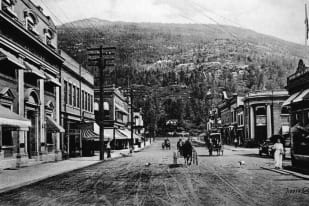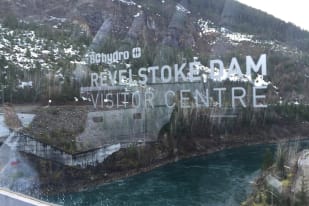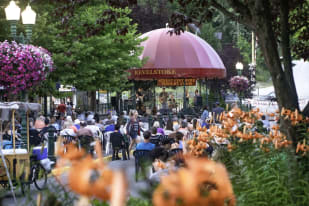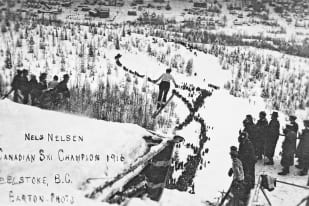The History of Revelstoke: From Railways to Outdoor Adventures

Revelstoke has been shaped by railways, industry, and winter sports. It has changed from a railway stop to a centre for outdoor recreation. Its story includes Indigenous history, European exploration, railway expansion, and economic shifts.
Indigenous History and Early Exploration
The Secwepemc and Ktunaxa peoples lived in the area for thousands of years. They used the Columbia River for travel and trade. The land provided food, materials, and spiritual sites. Indigenous communities built networks of trails and developed methods for living in the mountains and valleys. Seasonal migrations allowed them to follow game and harvest resources effectively.
In 1811, David Thompson traveled through the region while mapping trade routes for the North West Company. His exploration marked the beginning of European interest in the area. The fur trade brought settlers, but large-scale development did not happen until the railway arrived. Traders and trappers began to pass through, but permanent European settlements were minimal until the late 19th century.
The Railway and Economic Growth
In the 1880s, the Canadian Pacific Railway (CPR) planned a route through the area. A.S. Farwell established a townsite in 1885, expecting the railway to bring business. However, CPR officials created their own settlement next to Farwell’s, causing land disputes. In 1886, the railway station and town were named Revelstoke after a British banker who supported CPR’s expansion.
The railway created jobs and opportunities. Hotels, shops, and services appeared. By the early 1900s, Revelstoke had a department store, an opera house, and a growing population. The railway also brought tourism. Travelers used Revelstoke as a stop on their way to the mountains, leading to an interest in winter sports. Train traffic increased employment opportunities, and the railway station became a major hub in the region.
The Rise of Skiing and Winter Sports
Scandinavian immigrants brought skiing to Revelstoke in the late 1800s. By the 1890s, locals used skis for transportation. The first ski club formed, and competitive skiing grew. Revelstoke became known for ski jumping, especially after Nels Nelsen set world records in the 1920s.
The town built one of the first ski jumps in North America in 1915. Skiing events attracted large crowds. By the mid-1900s, alpine skiing gained popularity, and the mountains became a draw for visitors. Revelstoke Mountain Resort, which opened in 2007, took skiing to another level with the highest vertical drop in North America. Snowfall levels in the area consistently rank among the highest in the country, making it a natural choice for ski tourism.
Mount Revelstoke National Park
Local residents pushed for a national park to protect the area’s forests and wildlife. In 1914, Mount Revelstoke National Park was established. It preserved mountain landscapes and made alpine areas more accessible.
Early infrastructure projects improved access, with trails and roads leading to alpine lakes and the summit. The park became a site for hiking, skiing, and nature tourism. Over time, it has expanded its visitor facilities, attracting people year-round. The park’s ecosystems support a range of wildlife, including bears, mountain goats, and rare plant species that thrive in high-altitude environments.
Economic Changes and Modern Growth
The railway remains part of Revelstoke’s economy, but other industries have grown their presence in the area. Forestry has been a major employer for over a century, while tourism has expanded with skiing, snowmobiling, hiking and many other outdoor activities.
The Trans-Canada Highway, completed in 1962, made travel easier. More visitors arrived, leading to hotels, restaurants, and outdoor activity businesses. The development of Revelstoke Mountain Resort helped attract international attention. Construction and real estate have also grown as more people move to the area to live and work in the tourism and service industries. Seasonal tourism peaks during winter for skiing and summer for hiking and mountain biking, creating a year-round economic cycle.
Agriculture and Local Industry
Farming has also played a role in Revelstoke’s history. Early settlers grew crops and raised livestock to supply the railway workers and local markets. Some farms still operate, supporting the region’s food supply.
Retail, construction, and technology industries have added to the economy. As tourism has increased, businesses catering to outdoor recreation have grown. The town has adapted to changing economic conditions while keeping its historical character. Local farmers markets and craft industries provide a small but steady economic boost and help maintain a connection to the area's agricultural roots.
Preserving History and Culture
Revelstoke Museum and Archives preserves local history. Exhibits highlight Indigenous heritage, railway development, and sports achievements. Historical buildings, including early hotels and businesses, remain part of the town’s landscape.
Annual events celebrate history and culture. Community groups work to maintain heritage sites and educate new generations about Revelstoke’s past. The town’s identity is shaped by its history and its ongoing changes. Many buildings from the early 20th century still stand, providing a glimpse into Revelstoke’s past. Efforts continue to balance development with heritage conservation, ensuring that the past remains part of the town’s future.
Revelstoke continues to evolve, but its history remains visible in its streets, landmarks, and traditions. The combination of railway heritage, outdoor recreation, and economic resilience defines the town’s character today.




